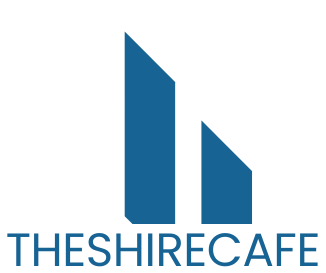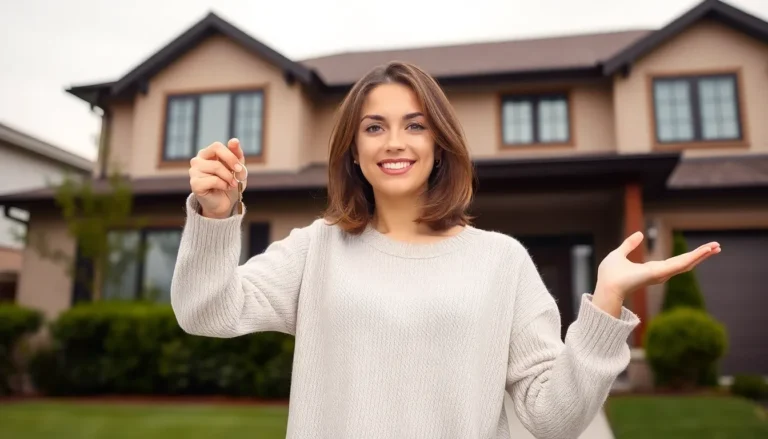In the world of real estate, first impressions matter more than a cat meme in a group chat. Home staging is the secret sauce that turns a house into a must-have dream home. It’s not just about tidying up; it’s about creating an inviting atmosphere that makes potential buyers feel like they’ve stepped into their future.
Table of Contents
ToggleUnderstanding Home Staging
Home staging plays a vital role in the real estate market. It transforms spaces into appealing environments for potential buyers. Creating an inviting atmosphere helps buyers imagine themselves living in a house. Effective staging goes beyond decluttering and cleaning by highlighting a property’s strengths.
Professional stagers often use furniture and decor to showcase how a space can be utilized. They understand that different rooms require different styles and arrangements. For example, a living room may benefit from cozy seating and vibrant art, while a bedroom should exude tranquility.
Additionally, lighting affects the perception of space. Bright, well-lit areas attract attention, making rooms feel larger and more welcoming. Many experts recommend using natural light and strategically placed lighting fixtures to enhance appeal.
Neutral color palettes typically appeal to a broader audience. Soft shades create a calm backdrop, allowing potential buyers to envision their personal touch. Bold colors might deter some buyers who may not share the same taste.
Market research indicates that staged homes often sell faster than non-staged counterparts. Statistics show that approximately 80% of buyers find it easier to visualize a property when it’s staged. This data underscores the benefits of investing time and effort into proper home staging.
Thinking about home staging? Consider consulting a professional to maximize the space’s potential. Professionals can provide advice tailored to specific property types and target demographics. Implementing these strategies leads to a successful sale and a seamless selling experience.
Importance Of Home Staging
Home staging elevates real estate appeal by emphasizing a property’s best features. It creates inviting atmospheres that help buyers envision themselves in the space.
Enhancing Visual Appeal
Staging focuses on enhancing the visual aspects that draw potential buyers in. Highlighting key features can make rooms look more spacious and welcoming. Furniture arrangements should aim to showcase every room’s purpose effectively. Effective lighting techniques can brighten areas, creating an inviting ambiance. Color palettes need to be neutral, allowing buyers to visualize their design preferences. Providing clean lines and uncluttered surfaces fosters a calming space. Staged homes often have a higher chance of attracting attention during showings.
Increasing Market Value
Market research supports the idea that staged homes sell at higher prices. Statistics show that homes staged before listing sell faster, with up to 80% of buyers preferring them. Staging effectively showcases properties, enhancing perceived value. A professional touch can be a game-changer in presenting homes competitively. Buyers feel more inclined to make offers on homes that illustrate livable environments. Ultimately, home staging can lead to a quicker sale and potential profit increase for sellers.
Key Home Staging Tips
Home staging significantly enhances a property’s marketability. Utilizing effective strategies can lead to quicker sales and increased profits.
Decluttering Your Space
Decluttering remains a critical aspect of home staging. It involves removing excess items to create an open and appealing environment. Potential buyers appreciate when they can envision themselves in a clutter-free space. Prioritizing functionality allows each room to showcase its purpose. Start by organizing belongings and packing away personal items to depersonalize the space. Consider adding storage solutions that keep items neatly tucked away, maximizing floor space and visual appeal.
Choosing Neutral Colors
Choosing neutral colors plays a vital role in home staging. Neutral tones create a calm backdrop that appeals to a wider audience. Light shades like beige, gray, and soft white enhance natural light, making rooms feel larger. Accent colors can be introduced through decor items like cushions or artwork, providing enough character without overwhelming potential buyers. Repainting walls in neutral shades increases the likelihood of showcasing a buyer’s vision for the home. Opting for neutral palettes allows for a smooth transition as buyers personalize each space, contributing to a more inviting atmosphere.
Focusing On Curb Appeal
Curb appeal significantly impacts first impressions. Improving the exterior can enhance the property’s attractiveness and draw in potential buyers. Simple tasks like mowing the lawn and trimming hedges can create a well-maintained look. Adding colorful flowers or plants adds vibrancy while enhancing visual interest. Ensure the front door looks inviting; consider a fresh coat of paint or new hardware to elevate its appeal. Clean pathways and driveways remove distractions and highlight the home’s best features. Focusing on these aspects demonstrates a well-cared-for property that attracts interested buyers.
Highlighting Key Features
Highlighting key features is essential for effective home staging. Emphasizing distinctive architectural elements or spacious areas captures buyers’ attention. Rearranging furniture can draw the eye to these highlights, allowing potential buyers to appreciate them fully. Consider using strategic lighting to enhance focal points, like fireplaces or built-in shelving. Creating inviting vignettes, such as a cozy reading nook, makes each space memorable. Home staging should showcase the property’s best attributes, illustrating how it can meet buyers’ needs, leading to a successful sale.
Common Mistakes To Avoid
Home staging enhances property appeal, yet common mistakes can hinder success. Avoiding these pitfalls ensures effective presentations that attract buyers.
Over-Personalization
Over-personalization detracts from home staging efforts. Potential buyers often find it challenging to envision themselves in a space filled with personal items. It’s essential to depersonalize by removing family photos and unique decor. Neutral decor choices let buyers imagine their preferences, enhancing emotional connections. Maintaining a clean, organized appearance allows prospective owners to see the home’s potential without distractions. Keeping items limited to a few tasteful accents creates inviting spaces, reinforcing broader market appeal.
Ignoring Lighting
Ignoring lighting can diminish a home’s overall attractiveness. Effective home staging utilizes natural light to create warm, welcoming atmospheres. Dark rooms often feel smaller and less appealing, reducing buyer interest. Adding mirrors can enhance light flow and create the illusion of more space. Lumens from bright bulbs help illuminate areas, making them feel larger and more inviting. Sheer curtains allow sunlight to enter while maintaining privacy, enhancing every room’s appeal. Optimal lighting transforms spaces, showcasing a home’s best features, thus attracting more potential buyers.
Home staging is a powerful tool that can significantly impact the selling process. By creating inviting spaces and showcasing a property’s strengths, sellers can make their homes more appealing to potential buyers. Implementing key strategies such as decluttering, using neutral colors, and enhancing curb appeal can transform a property into a desirable listing.
Avoiding common pitfalls like over-personalization and poor lighting ensures that buyers can envision themselves in the space. For those looking to maximize their home’s potential, consulting a professional stager can provide expert insights and elevate the overall appeal. A well-staged home not only attracts more attention but can also lead to quicker sales and higher offers. Embracing these tips can pave the way for a successful selling experience.



